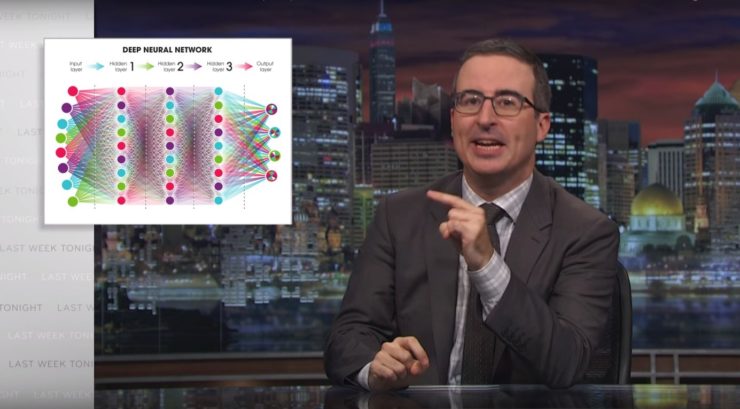Documentation
“Bring neural networks into the public eye!” – Max Peters
Reflecting on the fascinating research presented by Melvin Wevers on neural networks and the ongoing technical innovations within the field of computer recognition and identification software. Through a complex explanation of the mathematical and algorithmic techniques going into these research, Wevers showed us how computers are not just research tools, they are, as if they were human, ‘trained’ to become better at recognizing and identifying objects and patterns. The question that remains for me after all these insights, however, is a very simple ‘what’s the use’. In the first place, I wonder what essential research projects can now be undertaken that could not have been done (as easily) before, and do we actually need these? If I would look at Wevers’s presentation, I could conclude, very cynically, that many of the things he presents are nice gimmicks, cool techniques that allow for an increased intelligence in data mapping, but seem a bit like technology for technology’s sake. The reason that I bring this up, is because I found his presentation lacking when it came to the actual purpose of all these techniques. I do not blame him for choosing to focus more on the technical development, but I do think that the question remains what we can do with these techniques. Do we use object and facial recognition software only when searching the web or on digital platforms like Pinterest, or are we framed by security cameras, followed by intelligence agencies, or scanned by airport securities?

If I would try to answer these questions, I would probably fail to grasp the wide variety of applications that these neural networks are used for. With me, I think there is a majority of people who do not know what might actually be going on. Without trying to think too much in Orwellian narratives, I do think that the general public should be informed much more about what is actually going on with these neural networks. I would really appreciate a story that does not focus too much on the technical qualities, but rather, challenge the developers, agencies and companies to be transparent about their usages of these techniques. I feel there is a big field for investigative journalism waiting to be explored here, and many ethical questions can be raised here, ranging from security and privacy issues to the dangers of digital manipulation leading to misinformation. In fact, as a big fan of satirical news shows like Last Week Tonight with John Oliver or its Dutch variant Zondag met Lubach, I think there is a great opportunity for a 10 or 20-minute item, to explain these neural networks to a general, educated and critical public, in order to encourage ethical debates and maybe even political consequences. In other words; bring neural networks into the public eye!
- Lecture by Melvin Wevers for the Transmission in Motion program on February 22, 2018.
- Image created using a screenshot from Last Week Tonight’s YouTube channel and graph retrieved from http://bioinfo.iric.ca/a-week-of-deep-learning/

